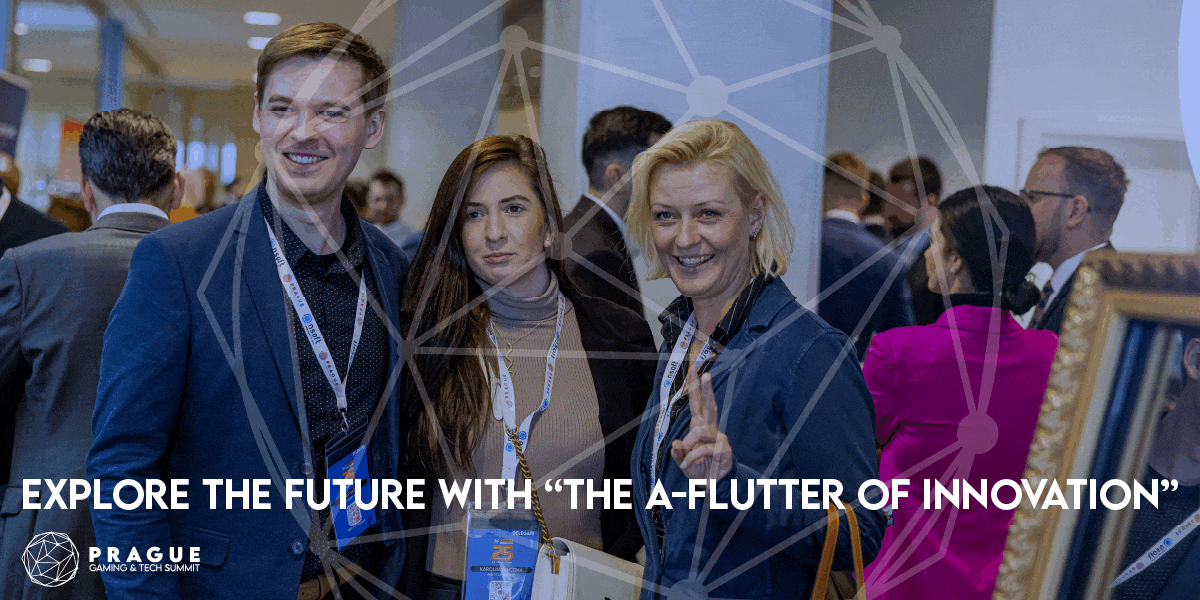Fintech
Offering New Hope for a Rare Form of non-Hodgkin’s Lymphoma: A Discussion with Dr. Ellen Kim on HyBryte(TM) from Soligenix
New York, New York–(Newsfile Corp. – July 6, 2021) – PCG Digital — A rare form of non-Hodgkin’s lymphoma, cutaneous T-cell lymphoma (CTCL) has no current FDA-approved first-line therapies. There are roughly 3,000 new CTCL cases in the United States each year, with more than 20,000 patients living with CTCL.
Small cap biotech Soligenix (NASDAQ: SNGX) is developing and moving toward potential commercialization of HyBryte™ (SGX301 or synthetic hypericin) as a novel first in class photodynamic therapy utilizing safe visible light for the treatment of early stage CTCL.
Recently Dr. Ellen Kim, Medical Director of the Dermatology Clinic for the Perelman Center for Advanced Medicine, Professor of Dermatology at the Hospital of the University of Pennsylvania, and the Lead Principal Investigator for Soligenix’s positive Phase 3 FLASH (Fluorescent Light Activated Synthetic Hypericin) study in CTCL, recently presented key details of HyBryte’s™ efficacy and safety profile at the United States Cutaneous Lymphoma Consortium (USCLC) Annual Meeting.
We caught up with Dr. Kim shortly after the meeting to discuss the HyBryte™ data and the current treatment landscape for CTCL.
- How does HyBryte™ stack up to other treatments that you’ve been using in your practice? If it gains FDA-approval, how will that affect your approach to treating Cutaneous T-Cell Lymphoma (CTCL)?
- HyBryte™ is as effective, and has better short term, and possibly long term, safety profile than current skin directed therapies. It is also effective for CTCL plaques which are traditionally more refractory to many skin directed treatments. Given this, it will be used both as first line therapy for my early stage patients and for patients who can’t continue other therapies due to side effects or loss of response.
- HyBryte™ uses visible light as opposed to ultraviolet (UV) light. Penn Medicine, as well as most centers treating this disease, is currently using UV treatments for CTCL. Is HyBryte™, in your opinion, a safer option?
- HyBryte™ has a definite advantage over phototherapy long term – it’s mechanism of action is distinct from ultraviolet phototherapy and is non-mutagenic so the risk of developing actinic skin damage and skin cancers is lower. Short term side effects were also less common and milder than what we see in traditional phototherapy.
- Dr. Kim, on the Penn Medicine website, it lists Photopheresis and T-Cell Lymphoma Phototherapy as two different treatments. Can you describe the difference between the two? Is one more effective than the other? Where would you classify HyBryte™?
- Phototherapy is a skin-directed treatment utilizing either ultraviolet A or B light and is used primarily in early stage CTCL.
Photopheresis is a systemic treatment where a patient’s peripheral white blood cells are treated ex vivo with UVA-based phototherapy in a machine and is indicated for primarily CTCL patients with blood involvement, most of whom have more advanced stage disease. Early stage CTCL patients without blood involvement are not typically treated with photopheresis at most centers.
Because they are used in different types of patients/stages of disease, and there are no randomized controlled trials that examined phototherapy vs photopheresis, one cannot compare the response rates between phototherapy and photopheresis to each other.
HyBryte™, a skin-directed therapy, is similar to phototherapy with a primary focus on treating early stage disease. Again, targeted as a potential first line therapy.
- Can you describe the process of Photopheresis and phototherapy from a patient’s perspective? How invasive is it for early stage patients? What can the patient expect as far as a timeline and level of discomfort? Does HyBryte™ provide a faster and more comfortable process?
- Traditional phototherapy and HyBryte™ have similar logistics from the patient perspective – they do require in office visits twice or three times weekly for a period of several months. Phototherapy treats the entire skin surface area exposed to the light, whereas HyBryte™ can be used for selective treatment if desired (though multiple lesions can be treated if desired as well). We don’t have direct trial data comparing phototherapy vs HyBryte™ regarding time to response. When I counsel patients starting traditional phototherapy, I counsel that initial response is seen at 4-6 weeks, but full response can take 4-12 months. We do know time to response is similar between HyBryte™ and topical bexarotene gel, topical nitrogen mustard gel, oral bexarotene in early stage disease; however, as I noted earlier, the safety profile of HyBryte™ compared to these other DNA-damaging therapies longer term is potentially much different given the mild side-effects we’ve seen in the Phase 3 FLASH study.
Photopheresis requires 2 outpatient treatments every 4 weeks, and a peripheral IV is placed each visit since the peripheral blood is removed from the patient temporarily during the treatment, so is considered a more invasive procedure. Time to response is slow – first response is seen at 3 months, full response takes 6-24 months. Again, the focus here is mostly later stage or for more advanced disease.
- Can you share any knowledge or experience you have with synthetic hypericin? Is it safe? Have you ever encountered any negative side effects from its use?
- After participating in the FLASH study as the overall study PI, I’ve been impressed with the efficacy and tolerability of HyBryte™ – any localized skin application side effects have been very mild and manageable compared to other current skin directed therapies.
- When will the public receive more details about the positive Phase 3 FLASH study and HyBryte™?
- This year, I’ve had the pleasure to present some of the high level positive results at three prestigious conferences in this disease space. The American Academy of Dermatology, the Society of Investigative Dermatology and the US Cutaneous Lymphoma Consortium; however, we currently anticipate having the full manuscript for the FLASH study (and HyBryte™) published in a peer reviewed medical journal and made available later this year.
- One final question, Dr. Kim. Can you definitively say that you will use HyBryte™ as a treatment option for CTCL in your practice, provided it gains FDA approval?
- Yes, most definitely. This will be a valuable, safer option for our patients who must utilize multiple different skin directed therapies to manage their chronic CTCL over many years and sometimes decades.
To learn more about Hybryte visit https://www.hybryte.com
Disclaimer
This communication was produced by PCG Digital LLC, an affiliate of PCG Advisory Inc., (together “PCG”). PCG is an integrated investor relations, communications and strategic advisory firm. The information contained on this is ‘Paid Advertising’ for purposes of Section 17(b) of the Securities Act of 1933, as amended (together with the rules and regulations there under, the “Securities Act”). PCG is compensated by respective clients for publicizing information relating to its client’s securities. For more information in terms of compensation received for services provided by PCG, see the pertinent advertising materials relating to the respective client. By accessing this Site and any pages thereof, you agree to be bound by the Terms of Use and Privacy Policy.
PCG is not a registered or licensed broker, dealer, broker-dealer, investment adviser nor investment manager, nor does PCG engage in any activities that would require such registrations. PCG does not provide investment advice, endorsement, analysis or recommendations with respect to any securities, and its services to or statements about its clients should never be construed as any endorsement of or opinion about any security of any client. No information contained in this communication constitutes an offer to sell, a solicitation of an offer to buy, or a recommendation of any security or any other similar product or service regardless of whether such security, product, or service is referenced in this communication.
Our reports/releases are a commercial advertisement and are for general information purposes ONLY. We are engaged in the business of marketing and advertising companies for monetary compensation. We only publish favorable information because we are compensated to publish only favorable information.
The contributors may buy and sell securities before and after any particular article, report and publication. In no event shall “PCG” or affiliates be liable to any member, guest or third party for any damages of any kind arising out of the use of any content or other material published or made available by “PCG”, including, without limitation, any investment losses, lost profits, lost opportunity, special, incidental, indirect, consequential or punitive damages. Further, nothing in this communication is intended to provide tax, legal, or investment advice and nothing in this communication should be construed as a recommendation to buy, sell or hold any investment or security or to engage in any investment strategy or transaction. Investing in micro-cap and growth securities is highly speculative and carries an extremely high degree of risk. It is possible that an investor’s investment may be lost or impaired due to the speculative nature of the companies profiled. Never invest in any stock featured by “PCG” unless you can afford to lose your entire investment. We urge investors to conduct their own in-depth investigation of the Profiled Issuers with the assistance of their legal, tax and investment advisers. An investor’s review of the Information should include but not be limited to the Profiled Issuer’s financial condition, operations, management, products or services, trends in the industry and risks that may be material to the profiled Issuer’s business and other information he and his advisers deem material to an investment decision. We encourage our readers to invest carefully and read the investor information available at the web sites of the U.S. Securities and Exchange Commission (SEC) at www.sec.gov and the Financial Industry Regulatory Authority (FINRA) at www.finra.org.
For full disclaimers, including compensation received for professional services, please visit www.pcgadvisory.com/disclosures.
Contact: [email protected]
Fintech
Fintech Pulse: Daily Industry Brief – A Dive into Today’s Emerging Trends and Innovations

The fintech landscape continues to redefine itself, driven by innovation, partnerships, and groundbreaking strategies. Today’s roundup focuses on the latest digital wallet offerings, evolving payment trends, strategic collaborations, and notable funding achievements. This editorial explores the broader implications of these developments, casting light on how they shape the future of fintech and beyond.
Beacon’s Digital Wallet for Immigrants: A Gateway to Financial Inclusion
Beacon Financial, a leading player in financial technology, recently launched a digital wallet tailored to meet the unique needs of immigrants moving to Canada. This offering bridges a critical gap, enabling seamless financial integration for newcomers navigating a foreign system.
By combining intuitive technology with user-centric features, Beacon aims to empower immigrants with tools for payments, savings, and remittances. This aligns with the growing demand for tailored financial products that resonate with specific demographics.
Op-Ed Insight:
Financial inclusion is more than just a buzzword; it’s a moral imperative in the fintech space. Products like Beacon’s digital wallet highlight the industry’s potential to create tangible change. As global migration trends increase, such offerings could inspire similar initiatives worldwide.
Source: Fintech Futures.
Juniper Research Highlights 2025’s Payment Trends
Juniper Research’s latest report unveils pivotal payment trends poised to dominate in 2025. Central themes include the adoption of instant payment networks, a surge in embedded finance solutions, and the rise of crypto-backed financial products.
The research underscores the rapid adoption of real-time payment systems, fueled by increasing consumer demand for speed and efficiency. Meanwhile, embedded finance promises to blur the lines between traditional banking and non-financial services, delivering personalized and context-specific solutions.
Op-Ed Insight:
As the lines between financial services and technology continue to blur, these trends emphasize the industry’s shift toward convenience and personalization. The growing role of crypto-based solutions reflects an evolving consumer mindset, where decentralization and digital-first experiences gain precedence.
Source: Juniper Research.
MeaWallet and Integrated Finance Partner to Revolutionize Digital Wallets
MeaWallet, a prominent fintech solutions provider, has partnered with Integrated Finance to advance digital wallet capabilities and secure card data access for fintech companies. This collaboration focuses on empowering fintechs to deliver better, safer digital payment experiences.
MeaWallet’s role as a technology enabler aligns seamlessly with Integrated Finance’s goal of simplifying complex financial infrastructures. Together, they aim to create scalable, robust platforms for secure payment solutions.
Op-Ed Insight:
Partnerships like this underscore the importance of collaboration in driving innovation. As security concerns grow in tandem with digital payment adoption, solutions addressing these challenges are essential for maintaining consumer trust. The fintech ecosystem thrives when synergy and innovation coalesce.
Source: MeaWallet News.
Nucleus Security Among Deloitte’s Fastest-Growing Companies
Nucleus Security has achieved a remarkable milestone, ranking 85th on Deloitte’s 2024 Technology Fast 500 list. This achievement is attributed to its robust cybersecurity solutions, which cater to the increasingly digital fintech environment.
With cyberattacks becoming more sophisticated, fintech companies are under immense pressure to safeguard their platforms. Nucleus Security’s growth reflects the rising demand for comprehensive, scalable security solutions that protect sensitive financial data.
Op-Ed Insight:
In a digital-first world, robust cybersecurity isn’t optional—it’s fundamental. The recognition of companies like Nucleus Security signals the growing importance of protecting fintech infrastructure as the industry scales globally.
Source: PR Newswire.
OpenYield Secures Funding to Transform the Bond Market
OpenYield has announced a successful funding round, aiming to revolutionize the bond market through innovative technology. The platform promises greater transparency, efficiency, and accessibility in fixed-income investments.
This funding underscores the growing appetite for digitizing traditionally opaque financial markets. By leveraging cutting-edge technology, OpenYield seeks to democratize bond investments, making them accessible to a broader audience.
Op-Ed Insight:
The bond market, long viewed as complex and inaccessible, is ripe for disruption. OpenYield’s efforts to modernize this space highlight fintech’s transformative potential to democratize finance and empower individual investors.
Source: PR Newswire.
Key Takeaways: Shaping the Future of Fintech
Today’s developments underscore several critical themes in the fintech landscape:
- Personalization and Inclusion: Products like Beacon’s wallet highlight the importance of understanding and addressing specific user needs.
- Collaborative Ecosystems: Partnerships, like that of MeaWallet and Integrated Finance, emphasize the power of collaboration in solving industry challenges.
- Emerging Technologies: Juniper Research’s predictions affirm the continued influence of blockchain, embedded finance, and instant payment networks.
- Security at the Core: The recognition of Nucleus Security underscores the essential role of cybersecurity in fintech.
- Market Transformation: OpenYield’s funding signifies the ongoing disruption of traditional financial markets, paving the way for broader accessibility.
The post Fintech Pulse: Daily Industry Brief – A Dive into Today’s Emerging Trends and Innovations appeared first on News, Events, Advertising Options.
Fintech
Fintech Pulse: Industry Updates, Innovations, and Strategic Moves

As fintech continues to reshape the global financial landscape, today’s briefing highlights pivotal developments, strategic expansions, and innovative launches across the industry. This op-ed explores the latest advancements with commentary on their potential impacts and challenges.
Finastra Data Breach: A Wake-Up Call for Fintech Security
Source: KrebsOnSecurity
The cybersecurity landscape is buzzing after Finastra, one of the largest financial technology providers globally, confirmed an investigation into a potential data breach. Reports suggest unauthorized access to its systems, raising concerns about data security across its client base, which includes thousands of banks and financial institutions worldwide.
Implications and Challenges
While the details of the breach remain sparse, this incident underscores a glaring vulnerability in the fintech sector—cybersecurity. As financial services increasingly rely on interconnected ecosystems, breaches like these threaten not only individual institutions but also the trust customers place in fintech platforms.
The key takeaway for the fintech industry is clear: proactive cybersecurity strategies must go beyond compliance. Real-time threat detection, robust encryption standards, and regular audits are no longer optional but essential for maintaining operational integrity.
Future Considerations
This breach could trigger a domino effect, prompting regulators to tighten security standards and requiring fintech companies to double down on investments in data protection. Startups and mid-tier players, often lacking extensive cybersecurity budgets, may face significant pressure to keep pace.
PayPal Resurrects Money Pooling Feature
Source: TechCrunch
In a bid to stay ahead of the competition, PayPal is reintroducing its Money Pooling feature, a popular tool that was discontinued in 2021. The feature allows users to pool funds collectively, catering to families, small businesses, and social groups.
Strategic Revival
This move reflects PayPal’s commitment to customer-centric innovation. By reinstating a feature beloved by its user base, the company seeks to reclaim market share lost to emerging competitors offering similar functionalities.
Broader Industry Impacts
Money pooling represents a broader trend in fintech—customized solutions that cater to niche needs. This reintroduction may inspire competitors like Venmo and CashApp to refine their collaborative payment offerings.
While this move strengthens PayPal’s ecosystem, its success will depend on seamless integration with existing services and robust fraud prevention mechanisms to avoid abuse of the feature.
Santander Expands Fintech Reach in Mexico
Source: Yahoo Finance
Santander is making waves in the Latin American fintech space with the launch of a dedicated fintech unit in Mexico. The initiative aims to capitalize on Mexico’s growing fintech adoption and digital payments market, valued at billions of dollars annually.
Strategic Significance
Santander’s expansion into Mexico highlights the region’s untapped potential. Latin America is a burgeoning market for fintech, driven by increasing smartphone penetration, a youthful demographic, and demand for accessible financial services.
Challenges on the Horizon
While Mexico offers immense opportunities, regulatory complexities and market competition from local players like Clip and Konfío pose significant challenges. Santander will need to blend its global expertise with local adaptability to succeed in this dynamic market.
2024 Global Fintech Awards: Spotlighting Excellence
Source: PRNewswire
Benzinga has announced the winners of the 2024 Global Fintech Awards, honoring companies and individuals driving innovation in financial technology. This year’s winners spanned categories like blockchain, artificial intelligence, and payment solutions.
Recognizing Industry Leaders
Awards like these highlight the collaborative spirit and entrepreneurial drive fueling fintech growth. Recognizing trailblazers not only motivates incumbents but also inspires startups to push the boundaries of innovation.
What It Means for the Ecosystem
The awards also bring attention to emerging technologies. Categories such as blockchain and AI signal the industry’s continued focus on leveraging cutting-edge tech for efficiency and scalability.
Commonwealth Central Credit Union Partners with Jack Henry
Source: FinTech Futures
Commonwealth Central Credit Union (CCCU) has announced a partnership with Jack Henry, a leading financial technology provider, for a comprehensive tech upgrade. The collaboration focuses on enhancing member experience through improved digital services.
Modernizing Member Experiences
Credit unions have often lagged behind major banks in adopting advanced digital solutions. By partnering with Jack Henry, CCCU aims to bridge this gap, offering members streamlined services such as mobile banking, automated lending, and personalized financial tools.
A Growing Trend
This partnership reflects a broader trend in the financial industry—credit unions and smaller banks embracing fintech to remain competitive. As customer expectations evolve, partnerships like this may become the norm rather than the exception.
Key Takeaways for the Fintech Industry
- Cybersecurity is Critical: The Finastra breach underscores the need for robust security measures.
- Innovation Drives Loyalty: PayPal’s revival of its Money Pooling feature highlights the importance of listening to customers.
- Regional Opportunities: Santander’s expansion into Mexico showcases the untapped potential of emerging markets.
- Recognition Matters: Awards like Benzinga’s provide valuable visibility for companies and individuals shaping the industry.
- Partnerships Foster Growth: Collaborations between credit unions and fintech companies signify a trend towards modernized financial solutions.
The post Fintech Pulse: Industry Updates, Innovations, and Strategic Moves appeared first on News, Events, Advertising Options.
Fintech
Fintech Pulse: Milestones, Partnerships, and Transformations in Fintech

The fintech sector continues its relentless drive toward innovation and market dominance. Today’s highlights include a record-breaking customer milestone for Revolut, groundbreaking fintech solutions for women in the EU, open entries for the PayTech Awards 2025, implications of political shifts on funding, and notable recognition at the US FinTech Awards.
Revolut Hits 50 Million Customers: A Global Fintech Giant’s Milestone
Source: Revolut
Revolut, the UK-based financial super app, has achieved a monumental feat: surpassing 50 million customers worldwide. This milestone underscores its position as a leader in the global fintech landscape, furthering its ambition to create the world’s first truly global bank.
Key to this success has been Revolut’s strategy of expanding its offerings, from banking to travel and crypto services, all within a seamless user experience. The company’s recent ventures into emerging markets such as Latin America and Asia demonstrate its intent to bridge financial services gaps while retaining competitive differentiation through technology.
This milestone is not just a triumph for Revolut but a signal of fintech’s capacity to redefine traditional banking. It reinforces the narrative that digital-first strategies, customer-centric innovation, and international scalability can challenge long-standing financial institutions.
PayTech Awards 2025: Celebrating Excellence in Innovation
Source: FinTech Futures
The PayTech Awards 2025 are officially open for entries, promising to spotlight the brightest minds and most innovative projects in the payment technology sector. These awards are a testament to the industry’s commitment to advancing secure, seamless, and scalable payment systems.
This year, the focus is on emerging technologies that redefine how businesses and consumers interact financially. Categories will recognize achievements across multiple domains, including sustainability in payments, AI-driven solutions, and partnerships that push boundaries.
As fintech companies prepare their entries, the awards provide a timely reminder of the sector’s ongoing evolution and the collaborative efforts required to achieve meaningful breakthroughs.
U.S. Politics and the Fintech Sector: A New Era of Funding?
Source: American Banker
The U.S. fintech sector might witness an infusion of optimism as speculation about a second Trump presidency gains momentum. The Trump-era policies of deregulation and venture capital encouragement are remembered as catalysts for unprecedented fintech growth during his first term.
While it remains uncertain how regulatory landscapes will shift, the possibility of a more relaxed approach toward fintech compliance could rejuvenate funding inflows. Investors and startups alike are watching closely, weighing the potential benefits against long-term risks tied to reduced oversight.
A politically charged backdrop often spells volatility, but for fintech, it may also spell opportunity. Preparing to adapt quickly will be crucial for startups and established players in the face of any regulatory pivot.
Klara AI and Unlimit: Addressing the €1.3 Trillion Female Economy
Source: FF News
Klara AI has teamed up with Unlimit to launch a fintech solution aimed at empowering women across the EU. This collaboration targets the €1.3 trillion female economy by addressing the unique financial needs of women entrepreneurs and consumers.
The solution promises to integrate AI-powered tools with streamlined financial management services, enabling users to access credit, manage investments, and scale businesses effectively. By tailoring services to the underserved female demographic, the partnership hopes to drive financial inclusion and support economic growth.
This initiative stands as a blueprint for fintechs exploring niche markets, proving that innovation tailored to specific segments can yield transformative results.
Autire: Accounting Tech of the Year at US FinTech Awards
Source: Business Wire
Autire, a rising star in financial technology, has been crowned ‘Accounting Tech of the Year’ at the US FinTech Awards 2024. The award recognizes Autire’s ability to blend cutting-edge AI with intuitive user interfaces, delivering unparalleled accounting solutions for businesses of all sizes.
Autire’s platform has gained traction for automating complex accounting tasks, ensuring compliance, and delivering actionable insights through real-time analytics. Its emphasis on reducing administrative burdens for SMEs has been particularly impactful, enabling entrepreneurs to focus on growth rather than bookkeeping.
The recognition not only cements Autire’s reputation but also highlights the role of AI-driven accounting solutions in reshaping business operations globally.
Final Thoughts: A Fintech Revolution in Full Swing
From customer milestones to policy-driven opportunities, the fintech ecosystem is in constant evolution. Revolut’s ascent to 50 million users signals growing consumer trust in digital platforms. The PayTech Awards continue to inspire innovation, while political shifts could redefine the regulatory landscape. Initiatives like Klara AI and Unlimit emphasize the power of targeted solutions, and companies like Autire show how niche technologies can achieve broad impact.
The next phase of fintech growth will likely hinge on inclusivity, adaptability, and innovation—pillars that today’s news stories exemplify.
The post Fintech Pulse: Milestones, Partnerships, and Transformations in Fintech appeared first on .
-

 Fintech3 days ago
Fintech3 days agoFintech Pulse: Industry Updates, Innovations, and Strategic Moves
-

 Fintech2 days ago
Fintech2 days agoFintech Pulse: Daily Industry Brief – A Dive into Today’s Emerging Trends and Innovations
-

 Fintech PR7 days ago
Fintech PR7 days agoLaunch of Al Faisal Al Baladi Holding
-

 Fintech PR3 days ago
Fintech PR3 days agoROLLER Releases 2025 Attractions Industry Benchmark Report, Unveiling Key Trends and Revenue Strategies
-

 Fintech PR2 days ago
Fintech PR2 days agoTAILG Represents the Industry at COP29, Advancing South-South Cooperation with Low-Carbon Solutions
-

 Fintech5 days ago
Fintech5 days agoFintech Pulse: Navigating Expansion, Innovation, and Sustainability
-

 Fintech4 days ago
Fintech4 days agoFintech Pulse: Milestones, Partnerships, and Transformations in Fintech
-

 Fintech PR2 days ago
Fintech PR2 days agoCritical Metals Surge Opens Prime Opportunity for Mining Investors












